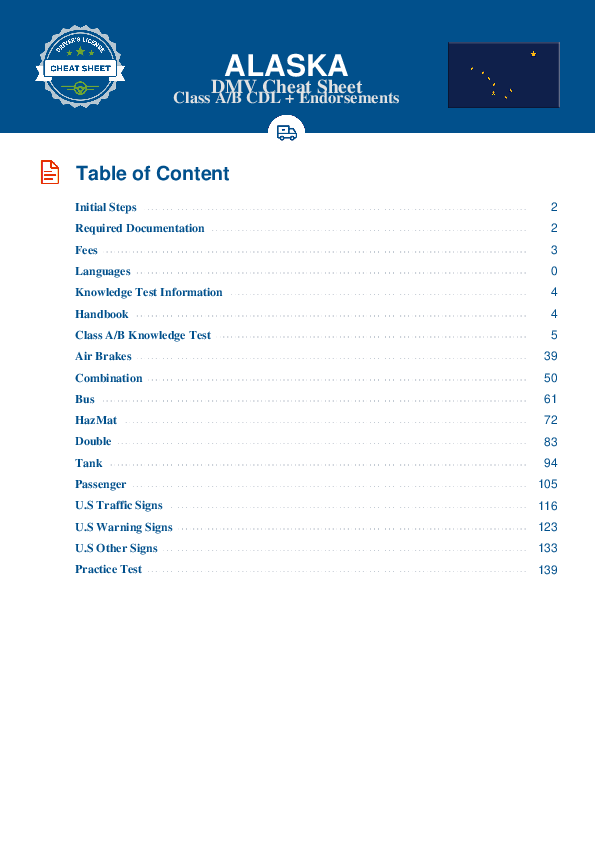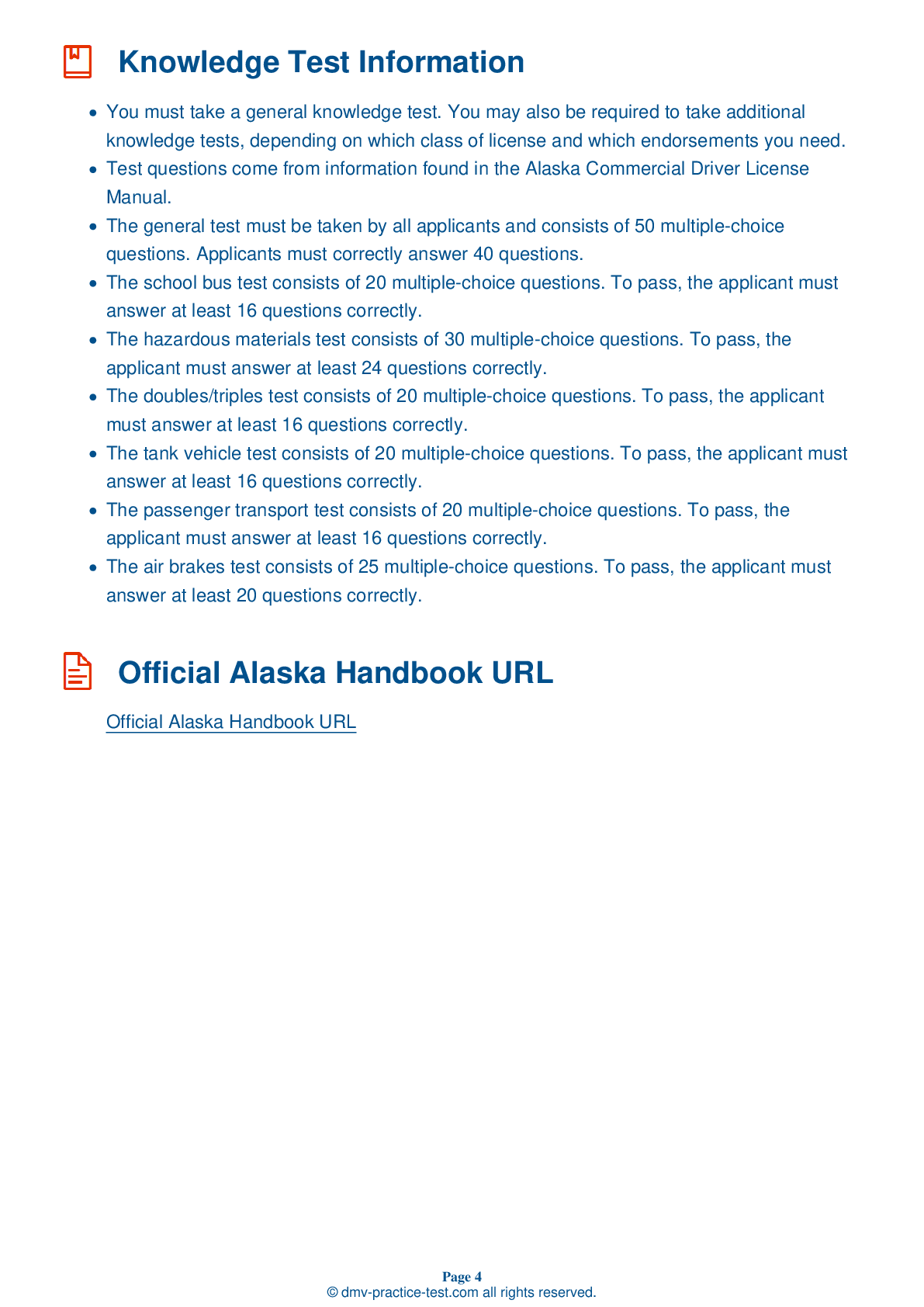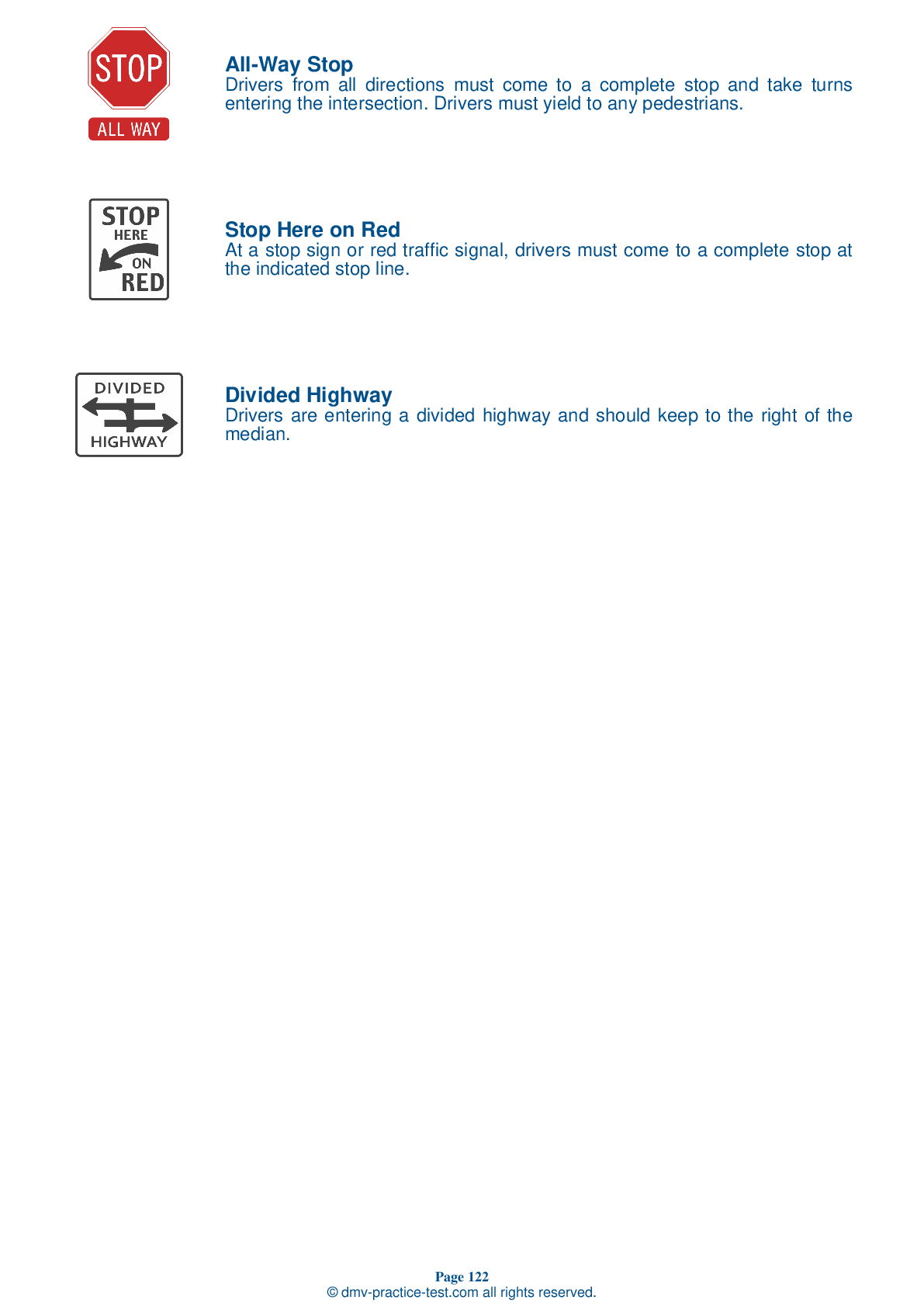Combination #2
Combination Vehicles Practice Test | Alaska 2025 #2 Page 2 of 3
Train for FREE online with our Alaska CDL combination vehicle test. The official exam test consists of several obligatory parts, with all of them checking your knowledge of different blocks of road rules. If you need to obtain a AK combination license in 2025, practice as much as possible. Free sample tests published on our website will help you check and improve your knowledge and boost your grades. Please bear in mind that DMV requirements for issuing a combination license may vary from state to state.
20
16
20
8 . If an air supply control is in its "emergency" position:
Tractor protection controls in older vehicles may be operated by levers instead of knobs. If an air supply control is set in its "emergency" position, the air supply will be stopped and the trailer emergency brakes will be applied.
9 . A tractor protection valve:
A tractor protection valve keeps air in a tractor or truck air brake system should the trailer break away or develop a bad leak. The valve will close automatically if the pressure drops to an unsafe level.
10 . If your vehicle gets stuck on railroad tracks, you should:
If your vehicle gets stuck on railroad tracks for any reason, you should immediately exit the vehicle and walk away from the tracks. Contact the proper emergency authorities.
11 . What is a tractor protection valve?
A tractor protection valve keeps air in a tractor or truck air brake system should the trailer break away or develop a bad leak. The valve will close automatically if the pressure drops to an unsafe level.
12 . The emergency air line supplies air to the:
The emergency air line (also known as the supply line) has two functions. The first is to supply air to the trailer air tanks, and the second is to control the emergency brakes on combination vehicles.
13 . The tractor protection valve:
A tractor protection valve keeps air in a tractor or truck air brake system should the trailer break away or develop a bad leak. The valve will close automatically if the pressure drops to an unsafe level.
14 . Before beginning a trip, you should:
Before a trip, you should ensure that air reaches all air brakes on all trailers by opening up the rear emergency line and service line shut-off valves and listening for escaping air. Close both shut-off valves before beginning to drive.
Search the best driving school in your neighbourhood
2025 Alaska | Frequently Asked Questions
A CDL Class A license in Alaska is defined as a commercial driver's license that allows holders to operate any combination of vehicles with a Gross Vehicle Weight Rating (GVWR) of 26,001 pounds or more, provided the towed vehicle is heavier than 10,000 pounds. It typically covers vehicles like tractor-trailers, truck and trailer combinations, tank vehicles, and livestock carriers.
A Class A CDL license in Alaska allows the holder to operate vehicles such as tractor-trailers, truck and trailer combinations, flatbeds, livestock carriers, and tank vehicles. The license covers any combination of vehicles with a Gross Vehicle Weight Rating (GVWR) of 26,001 pounds or more, given the towed vehicle exceeds 10,000 pounds.
To obtain a Class A CDL license in Alaska, you must be at least 18 years old (21 for interstate driving), possess a valid driver's license, pass a vision test, and complete a written knowledge test. You're also required to pass a skills test, which includes a pre-trip vehicle inspection, a basic vehicle control test, and an on-road driving exam.
In Alaska, you must be at least 18 years old to obtain a Class A CDL for intrastate driving (within state lines). However, federal regulations require drivers to be at least 21 years old to drive commercial vehicles across state lines (interstate) or to transport hazardous materials.
While specific endorsements aren't required for a Class A CDL, they allow you to operate specialized vehicles. Endorsements include H (Hazardous Materials), N (Tank Vehicles), P (Passenger Vehicles), S (School Buses), T (Double/Triple Trailers), and X (Combination of Tank Vehicle and Hazardous Materials). Each requires an additional knowledge test, and some require a skills test.
The Class A CDL skills test in Alaska consists of three parts: a pre-trip vehicle inspection to assess your ability to determine if your vehicle is safe to drive, a basic vehicle control test to evaluate your ability to control the vehicle, and an on-road driving exam where you demonstrate your ability to safely drive the vehicle on public roads.
Yes, there are limitations for Class A CDL license holders. These include restrictions based on the driver's experience, age, health status, and specific vehicle features. For instance, drivers may have restrictions if they fail the air brake portion of the test or if they drive a vehicle without a full air brake system. Also, drivers under 21 are restricted to intrastate driving.
In Alaska, the written Class A CDL test is primarily administered in English to ensure drivers can understand road signs and signals. However, the state allows the use of translators or interpreters for those who don't speak English fluently. It's advisable to contact your local DMV office beforehand to confirm their specific policies regarding language assistance.
Yes, accommodations can be made for the Class A CDL written test in Alaska if you have a disability. You need to inform the DMV about your specific needs when scheduling your test. They can provide aids such as audio versions of the test, extra time, or quiet testing environments depending on your requirements.
Yes, if you don't pass the Class A CDL written test in Alaska, you can retake it. However, you must wait at least one day before retaking the test. The Alaska DMV allows multiple attempts, but repeated failures may require additional training or instruction before another attempt is allowed. Fees may apply for each test attempt.




